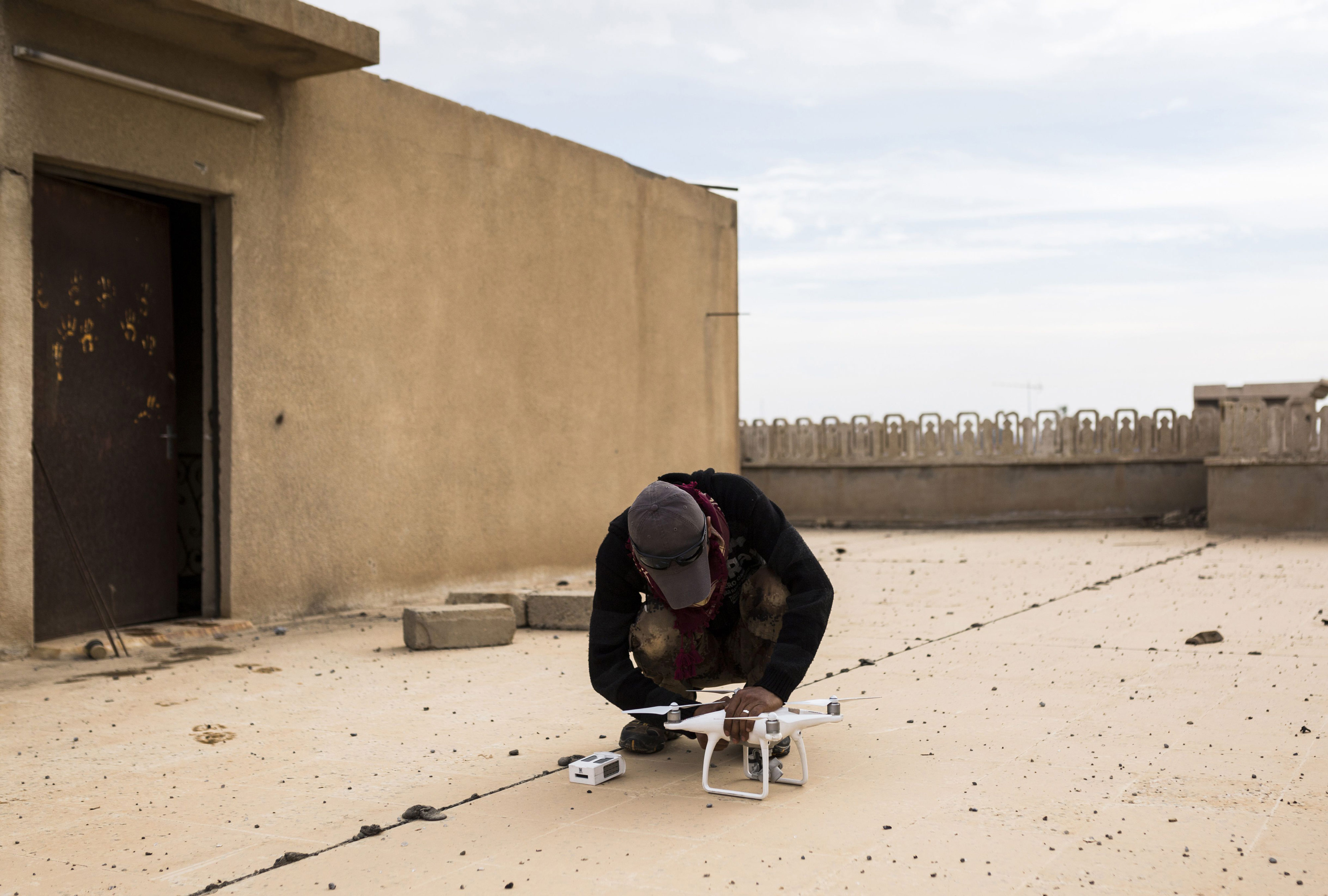Can DJI’s No-Fly Zone Software Stop ISIS from Weaponizing Drones?

A recent trend amongst terrorists in the Middle East has been to equip off-the-shelf drones with rudimentary explosives to turn them into miniature bombers. But the world’s largest drone manufacturer is fighting back.
Last year, the Pentagon announced that ISIS fighters had decided to add a weapon to its arsenal that America has been employing to devastating effect for years: drones. But instead of expensive, missile-carrying aircraft, the group's soldiers have begun using modified consumer drones that were retrofitted with explosives, turning them into flying bombs, or the means to to drop explosives on a target. This year, the terror organization even announced that it had established an Unmanned Aircraft of the Mujahideen unit, which claimed to have killed or wounded 39 Iraqi soldiers in one week using drones.
Now, the Chinese drone manufacturer DJI has decided to fight back, according to the Register. Software in the company’s drones can define no-fly zones that the aircraft are forbidden from entering. Typically, this geo-fencing technique is used them to prevent people from flying their craft into restricted areas, like airports and military bases. But DJI now appears to have added a series of locations across Syria and Iraq to the list, including the city of Mosul.
It’s not clear how constructive the move will be. First, it’s possible to circumvent the no-fly zones by making tweaks to a drone's software. Second, not all of the drones being used by ISIS are off-the-shelf: as Popular Science reported last year, the organization has also been building its own aircraft from scratch, using component parts and rudimentary airframes. It will also affect operations by Iraq’s own military, which has itself started to use modified consumer drones to attack ISIS in recent months.
(Read more: The Register, Washington Post, Popular Science, USA Today, “The World as Free-Fire Zone”)
Keep Reading
Most Popular
Large language models can do jaw-dropping things. But nobody knows exactly why.
And that's a problem. Figuring it out is one of the biggest scientific puzzles of our time and a crucial step towards controlling more powerful future models.
How scientists traced a mysterious covid case back to six toilets
When wastewater surveillance turns into a hunt for a single infected individual, the ethics get tricky.
The problem with plug-in hybrids? Their drivers.
Plug-in hybrids are often sold as a transition to EVs, but new data from Europe shows we’re still underestimating the emissions they produce.
Stay connected
Get the latest updates from
MIT Technology Review
Discover special offers, top stories, upcoming events, and more.